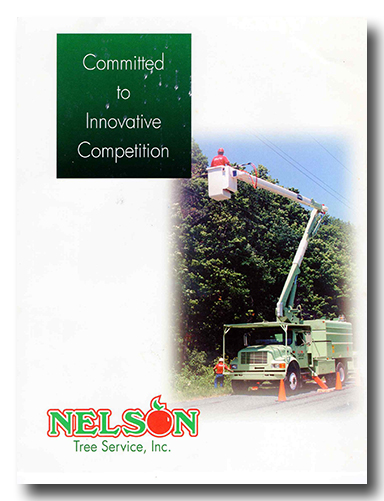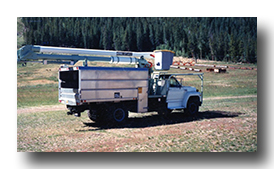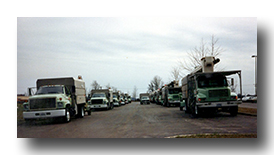Nelson Tree Service Inc
Nelson Tree Service Inc. Prologue. I purchased Nelson tree service in 1970. Nelson’s business was providing line clearance, and right-of-way clearance services for public utilities. It had five customers, approximately 80 employees, and 60 trucks and vehicles. Purchase price was $750,000. It had a small, but experienced management team. The first year I spent only a the third of my time involved with Nelson. After the first acquisition, Banks Tree Service of Wichita Kansas, I became totally committed. Over 34 wonderful years with wonderful people and the best of times. Unfortunately, the last were difficult as Asplundh forced the sale of the company.
|
|
|---|
I). The Purchase. After years of trying for years to acquire a business, Walter Oelman, college roommate Bill’s father, introduced me to Jim Herman a Dayton attorney. He had acquired Nelson; he out of bankruptcy. He wanted to sell. His bank agreed to finance the deal. I made the offer of $750,000. He rejected my bid. He went to Davy Tree Service. They which made an identical offer. He then decided to sell to me. ($150,000equity-$600,00 loan from his bank. Finance 101!).
II). First Years. Nelson had an experienced management team. Blair Caplinger was president. Vern 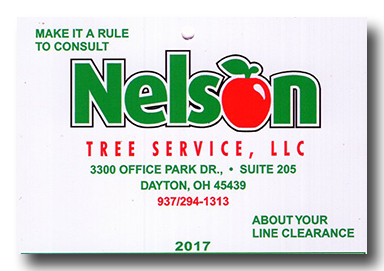 Milhoan VP, was field manager over both line clearance and significant large right-of-way clearance projects. Blair was adequate at best. Vern was superb.for the first few years I divided my time between Nelson and exploring other business opportunities, especially in Baltimore. I traveled to meet Nelson’s customer. I became familiar with field operations. I moved the company’s office. I changed the color of the trucks and the company’s logo,. In the third year, I acquired Banks Tree Service of Wichita, Kansas. I then became fully involved; Blair Caplinger retired. Vern Milhoan and I managed the company.
Milhoan VP, was field manager over both line clearance and significant large right-of-way clearance projects. Blair was adequate at best. Vern was superb.for the first few years I divided my time between Nelson and exploring other business opportunities, especially in Baltimore. I traveled to meet Nelson’s customer. I became familiar with field operations. I moved the company’s office. I changed the color of the trucks and the company’s logo,. In the third year, I acquired Banks Tree Service of Wichita, Kansas. I then became fully involved; Blair Caplinger retired. Vern Milhoan and I managed the company.
EIII). Middle Years. The industry was dominated by two large companies. Asplundh was by far the largest. Davy was a distant second. The rest of the industry comprised a number of small companies, with few regional contracts. There were many opportunities. All major utilities wanted more than one line clearance contractors. Nelson’s field management under Vern was competent and able to handle expansion. Nelson’s reputation was excellent. Finance 101 made expansion possible. With the first acquisition after Banks Tree Service, we secured the Columbus and Southern contract for central Ohio. American Electrical Power brought that company and expanded our contracts. Later we acquired Fitzwater Tree Service (Greenville) customer, Dayton Power and Light. The largest acquisition was Heath Tree Service, the largest contractor in Michigan Detroit Edison and Consumers Power (all of Northern Michigan).I attended conventions and traveled to many utilities. This resulted in a number of new contracts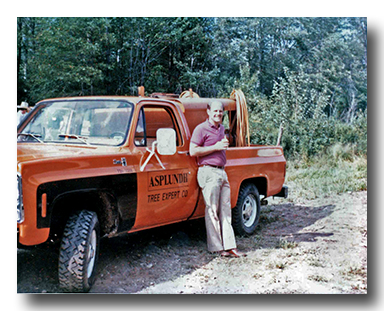 I met Lou Nicole. He was field manager for a small subsidiary of a large conglomerate, that was having financial problems. Lou was unhappy. He managed a significant number of utility contracts. He was unhappy. We had lunch, made a deal. He left the company and brought with him his management team. This resulted in our largest single expansion. Since there was no purchase of equipment, just a flood of new contracts, we had to really hustle to provide the required fleets of trucks and chippers None of this would been possible without John Eglin and the Ashland Ohio garage, and Jeff Jones and the Dayton office and our good relationship with Ohio National Bank. (For me these were the best of years. I was constantly on the road. Arizona to New Hampshire, New Mexico, to Michigan. My Dayton home and office the Ashland garage and travel became my life. I acquired a fishing, hunting lodge on Lake Charlevoix, Michigan, to entertain customers and have fun.. Attended conventions from San Francisco to Nova Scotia. Still had an active social life in both Baltimore and Washington.
I met Lou Nicole. He was field manager for a small subsidiary of a large conglomerate, that was having financial problems. Lou was unhappy. He managed a significant number of utility contracts. He was unhappy. We had lunch, made a deal. He left the company and brought with him his management team. This resulted in our largest single expansion. Since there was no purchase of equipment, just a flood of new contracts, we had to really hustle to provide the required fleets of trucks and chippers None of this would been possible without John Eglin and the Ashland Ohio garage, and Jeff Jones and the Dayton office and our good relationship with Ohio National Bank. (For me these were the best of years. I was constantly on the road. Arizona to New Hampshire, New Mexico, to Michigan. My Dayton home and office the Ashland garage and travel became my life. I acquired a fishing, hunting lodge on Lake Charlevoix, Michigan, to entertain customers and have fun.. Attended conventions from San Francisco to Nova Scotia. Still had an active social life in both Baltimore and Washington.
Ashland Garage Trucks |
|---|
IV). Final years. The company had grown from 80 employees and 60 vehicles, to 2500 employees and over a thousand vehicles. Nelson had a wonderful management team, Vern had retired, but Jeff Jones had assumed more responsibility as had other top managers. The competition became more than difficult. (Chris Asplundh was a talented, ruthless, competitor with a deep pocket. (The Asplundh family at that time was listed in the top hundred wealthiest families in United States.) After competing with him for 15 years I came to know him well. In the later years he changed his strategy. He tried to persuade utilities that they needed just one contractor, He called it “sole source contracting”. (I'm convinced he paid off utility top officials, Commonwealth Edison, Chicago and American Electrical Power, Columbus. These, two of Nelson’s major customers, canceled our contracts no notice.). He took Bartlett Tree Service out of the utility business. I knew we would have to sell, but hoped to at least get a reasonable price. (I spent two years going pre-bid meeting all over the country. I would place bids or pretend place bid. This would force Chris to bid low, very costly for Chris). Most difficult time in my career. Finally, sold at a significant discount. The good result, if there was one, was that Chris agreed to keep Nelson as a separate company. I convinced him that the utilities would still think that there was competition, if separate companies. At this time, Nelson is still managed separately by my former employees. Jeff Jones has been an incredible CEO. The company last year most profitable division of Asplundh.
